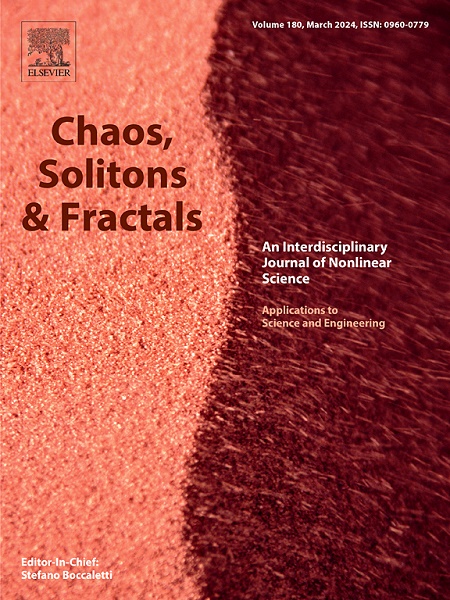Efficient and faithful reconstruction of dynamical attractors using homogeneous differentiators
IF 5.3
1区 数学
Q1 MATHEMATICS, INTERDISCIPLINARY APPLICATIONS
引用次数: 0
Abstract
Reconstructing the attractors of complex nonlinear dynamical systems from available measurements is key to analyse and predict their time evolution. Existing attractor reconstruction methods typically rely on topological embedding and may produce poor reconstructions, which differ significantly from the actual attractor, because measurements are corrupted by noise and often available only for some of the state variables and/or their combinations, and the time series are often relatively short. Here, we propose the use of Homogeneous Differentiators (HD) to effectively de-noise measurements and more faithfully reconstruct attractors of nonlinear systems. Homogeneous Differentiators are supported by rigorous theoretical guarantees about their de-noising capabilities, and their results can be fruitfully combined with time-delay embedding, differential embedding and functional observability. We apply our proposed HD-based methodology to simulated dynamical models of increasing complexity, from the Lorenz system to the Hindmarsh–Rose model and the Epileptor model for neural dynamics, as well as to empirical data of EEG recordings. In the presence of corrupting noise of various types, we obtain drastically improved quality and resolution of the reconstructed attractors, as well as significantly reduced computational time, which can be orders of magnitude lower than that of alternative methods. Our tests show the flexibility and effectiveness of Homogeneous Differentiators and suggest that they can become the tool of choice for preprocessing noisy signals and reconstructing attractors of highly nonlinear dynamical systems from both theoretical models and real data.
利用齐次微分器高效可靠地重建动态吸引子
利用现有的测量数据重构复杂非线性动力系统的吸引子是分析和预测其时间演化的关键。现有的吸引子重建方法通常依赖于拓扑嵌入,并且可能产生较差的重建,与实际的吸引子有很大的不同,因为测量结果受到噪声的破坏,并且通常只能用于某些状态变量和/或它们的组合,并且时间序列通常相对较短。在此,我们提出使用齐次微分器(HD)来有效地去噪测量和更忠实地重建非线性系统的吸引子。齐次微分器的去噪能力得到了严格的理论保证,其结果可以有效地与时延嵌入、微分嵌入和函数可观测性相结合。我们将我们提出的基于高清的方法应用于模拟越来越复杂的动态模型,从洛伦兹系统到Hindmarsh-Rose模型和神经动力学的癫痫模型,以及脑电图记录的经验数据。在存在各种类型的破坏性噪声的情况下,我们获得了重建吸引子的质量和分辨率的显著提高,并且显著减少了计算时间,这比其他方法低了几个数量级。我们的实验显示了齐次微分器的灵活性和有效性,并表明它们可以从理论模型和实际数据中成为预处理噪声信号和重建高度非线性动力系统吸引子的首选工具。
本文章由计算机程序翻译,如有差异,请以英文原文为准。
求助全文
约1分钟内获得全文
求助全文
来源期刊

Chaos Solitons & Fractals
物理-数学跨学科应用
CiteScore
13.20
自引率
10.30%
发文量
1087
审稿时长
9 months
期刊介绍:
Chaos, Solitons & Fractals strives to establish itself as a premier journal in the interdisciplinary realm of Nonlinear Science, Non-equilibrium, and Complex Phenomena. It welcomes submissions covering a broad spectrum of topics within this field, including dynamics, non-equilibrium processes in physics, chemistry, and geophysics, complex matter and networks, mathematical models, computational biology, applications to quantum and mesoscopic phenomena, fluctuations and random processes, self-organization, and social phenomena.
 求助内容:
求助内容: 应助结果提醒方式:
应助结果提醒方式:


